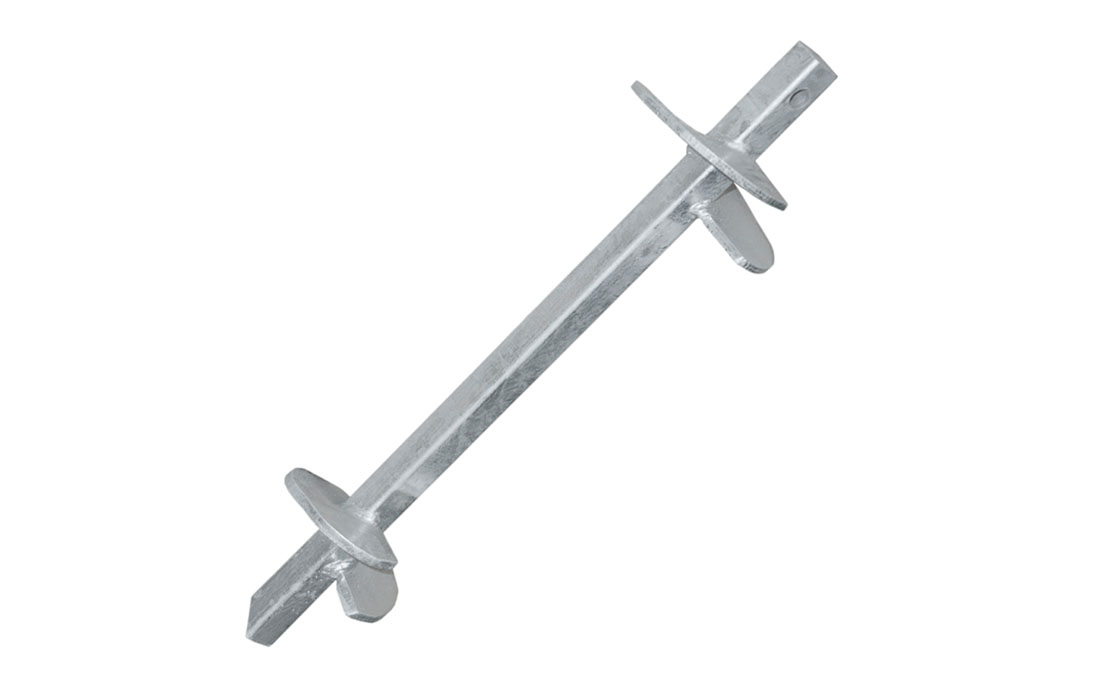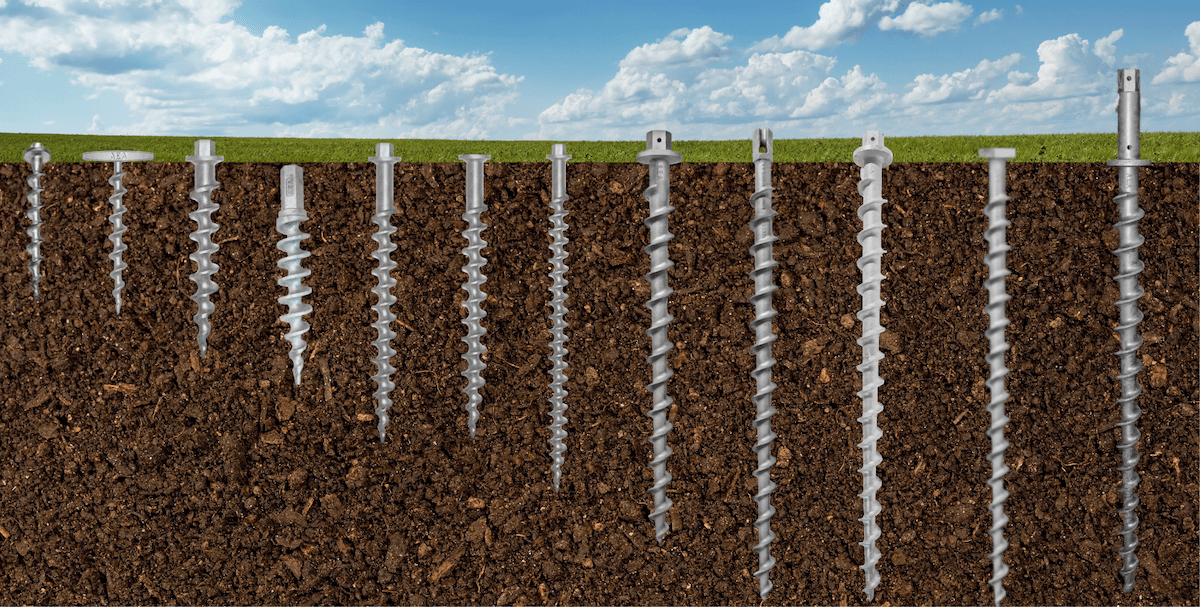Major Benefits Offered by construction site anchors in Urban Environments
Wiki Article
Exactly How Durable Earth Anchors Work: A Comprehensive Guide to Dirt Anchoring Solutions
Heavy-duty Earth supports play a vital role in giving security and assistance in various building applications. By installing deeply into the ground, they resist side and upright pressures successfully. Different kinds of supports deal with various dirt problems, making them flexible. Understanding their auto mechanics and setup techniques is essential for optimizing performance. What aspects affect their performance, and exactly how do they contrast to conventional methods? The responses may stun you.Understanding Durable Earth Anchors
Durable Earth anchors work as crucial components in various building and construction and landscaping projects, offering stability and support in tough dirt problems. These supports operate by being installed right into the ground, where they withstand vertical and lateral forces. Their design permits protected accessory to structures, ensuring they continue to be secured against soil motion or exterior loads.The performance of durable Earth supports greatly depends upon the kind of dirt and the support's setup deepness. Appropriate installation techniques are crucial, as they establish the anchor's holding capacity. Environmental aspects, such as moisture and freeze-thaw cycles, can additionally influence performance.These supports are often utilized in applications ranging from safeguarding fencings and preserving walls to maintaining short-lived frameworks during unfavorable climate condition. Comprehending the principles behind sturdy Earth supports is necessary for specialists looking for to improve the sturdiness and safety of their jobs.Kinds Of Heavy-Duty Earth Anchors
Various kinds of sturdy Earth supports are created to satisfy specific requirements based on soil problems and job needs. Helical supports, featuring screw-like blades, are efficient in softer soils, supplying high load capabilities and easy installment. Driven supports, which are hammered into the ground, are suitable for rough terrains and offer prompt lots support. Tie-back supports are commonly used in retaining wall applications, permitting for side assistance by securing into the ground at an angle. Another kind is the cast-in-place support, suitable for concrete applications, as they are incorporated into foundations for enhanced security. Lastly, soil screw anchors are flexible options that can be utilized in different soil kinds, giving reliable stress and compression abilities. Each type serves distinctive applications, ensuring security and safety and security in building and construction and landscape design projects. Comprehending these alternatives permits for educated choices in selecting the proper Earth securing option.The Mechanics of Soil Anchoring

Recognizing the auto mechanics of dirt anchoring requires an evaluation of different types of Earth supports and their setup methods. Each support kind offers distinct features that affect its effectiveness in various dirt conditions. Proper installation methods are vital for making the most of the anchoring system's stability and efficiency.
Types of Earth Anchors
Earth supports, important elements in dirt anchoring systems, can be found in a number of types, each created for details applications and soil problems. The most common types consist of screw anchors, which are turned into the ground, offering solid side resistance. Helical anchors feature blades that permit effective installment in various soil types, making them ideal for both temporary and irreversible applications. Driven supports, commonly made from steel, are hammered into the dirt and work in rocky or dense atmospheres. Auger supports make use of a helical layout to help with installation in softer dirts. Plate anchors are composed of a level plate buried flat, distributing lots over a bigger location, ideal for applications needing high tons capacities in cohesive soils.Installment Strategies Described
Proper installation techniques are important for the efficiency of soil anchoring systems. The process usually begins with website evaluation, confirming the chosen area can sustain the anchor's load. After figuring out the right support kind, appropriate hole depth and angle should be established. The installation includes driving the support into the ground utilizing specific tools, such as hands-on or hydraulic motorists, to achieve finest embedment. Post-installation, tensioning the anchor is critical to assure security; this is usually confirmed with lots screening. Additionally, surrounding dirt problems must be kept track of to prevent displacement. Complying with these techniques not just enhances the anchor's efficiency yet likewise extends its life-span, supplying dependable assistance for numerous applications.Applications of Heavy-Duty Earth Anchors
While sturdy Earth anchors are usually connected with building and construction and landscape design, their versatility includes a selection of applications throughout various industries. In civil design, they give essential assistance for maintaining wall surfaces, making certain stability in areas prone to soil disintegration. The marine market uses these anchors for protecting docks and marinas, preventing activity triggered by currents and trends. In addition, in the telecom market, heavy-duty Earth anchors are significant for supporting cell towers and other tall structures against wind forces. Agricultural applications additionally benefit, as these anchors can secure frameworks like greenhouses and animals secure fencing, guaranteeing they withstand extreme climate condition. Moreover, in eco-friendly energy projects, such as wind farms, Earth anchors play an important role in safeguarding wind turbine foundations, improving general safety and security and efficiency. This broad variety of applications highlights the adaptability and reliability of durable Earth anchors across different areas.Advantages Over Standard Anchoring Approaches
Although conventional anchoring approaches have actually long been counted upon for security, sturdy Earth anchors supply substantial advantages that improve performance and effectiveness. One significant advantage is their premium load-bearing ability, which permits them to endure higher forces without failing. This stamina makes them ideal for requiring applications, such as in building and energy installations.Additionally, heavy-duty Earth supports are created for deeper installment, offering higher security in numerous soil problems, including loosened or sandy dirts. Their resistance to deterioration and environmental elements assures a much longer lifespan and decreased maintenance expenses compared to standard methods.Moreover, these anchors can be set up with marginal disturbance to the surrounding area, protecting the integrity of the landscape. On the whole, heavy-duty Earth supports offer a effective and trustworthy option for securing requirements, exceeding the restrictions often related to standard check my source anchoring strategies.Installment Process and Finest Practices
The installment procedure for soil securing services begins with extensive prep work and site evaluation to guarantee peak efficiency. Following this, a detailed installation overview provides clear directions for effective application (Manta Ray anchors). Sticking to these ideal practices is essential for attaining resilient and reputable anchoring outcomesPrep Work and Site Evaluation
Efficient preparation and thorough website examination are crucial action in the setup of dirt anchoring remedies. Before installment, the dirt type have to be examined to establish its bearing ability and suitability for anchoring. Carrying out a geotechnical survey can offer vital details concerning dirt make-up, wetness levels, and possible ground activity. Additionally, identifying existing structures, vegetation, and utilities is important to avoid interference throughout installment. The area ought to be free from debris and obstacles to assure safe gain access to for devices. Weather need to likewise be checked, as unfavorable conditions can impact both safety and installation efficiency. By meticulously preparing the website and read reviewing all appropriate variables, the likelihood of successful support performance is significantly raised.Step-by-Step Installment Guide
A complete setup process is important for attaining suitable performance of soil securing services. The installment starts with selecting the ideal anchor kind and guaranteeing the site is free from debris. Next, correct hole placement is identified based on lots needs. When the location is developed, holes are drilled to the specified depth and size making use of the right devices. The anchor is then put right into the opening, making certain it is straightened appropriately. After protecting the anchor, soil is backfilled and compacted to enhance security. It is important to follow maker guidelines throughout the procedure. A post-installation evaluation validates that the supports are sufficiently located and working as intended, offering reliable assistance for the intended application.
Maintenance and Examination of Earth Anchors
Normal maintenance and assessment of Earth anchors are crucial for making sure lasting efficiency and security. Routine checks permit the very early discovery of concerns such as deterioration, loosening up, or soil activity. Inspectors must look for signs of corrosion or destruction on the support parts, especially at the connection factors. Furthermore, the surrounding soil should be assessed for erosion or adjustments in moisture material, which can affect anchor effectiveness.It is recommended to establish a routine inspection schedule, preferably at the very least yearly, relying on ecological conditions. During examinations, all noticeable elements should be cleansed to remove these details dirt or debris that can conceal potential issues. Any type of signs of distress, such as turning structures or unusual settling, ought to prompt immediate examination. Proper paperwork of assessments can aid in tracking support performance with time and promote prompt maintenance actions, guaranteeing the anchors continue to be trusted and functional.Often Asked Concerns
What Materials Are Heavy-Duty Earth Anchors Commonly Made From?
Heavy-duty Earth supports are commonly built from resilient products such as galvanized steel or stainless-steel, ensuring strength and resistance to deterioration. These materials give lasting support and security in different soil problems and applications.Exactly How Do Soil Problems Impact Support Efficiency?
Dirt problems significantly influence anchor performance. Elements such as soil type, dampness material, and compaction impact the anchor's grasp and security, with cohesive soils often providing much better resistance than sandy or loose dirts, impacting general effectiveness.
Can Heavy-Duty Earth Anchors Be Reused After Elimination?
Sturdy Earth anchors can be reused after elimination, supplied they are examined for damage and wear. Correct cleaning and maintenance boost their longevity, making certain effective efficiency in succeeding setups when problems permit safe reinstallation.What Are the Ecological Influences of Utilizing Earth Anchors?
The environmental impacts of utilizing Earth supports consist of prospective dirt disturbance, interruption of neighborhood communities, and possible contamination of groundwater. Nonetheless, if made use of sensibly, their benefits often exceed these worries, promoting security in different applications.Exactly how Do I Choose the Right Support for My Task?

Report this wiki page